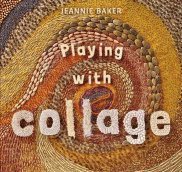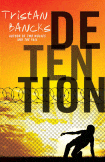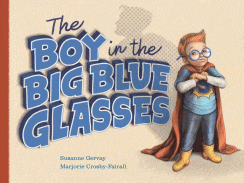
Playing with Collage
Playing with Collage
Jeannie Baker
Walker Books, 2019
40pp., hbk., RRP $A27.99
9781406378665
On the surface, this looks like a how-to guide to creating illustrations using collage, a technique defined by the Oxford Dictionary as “A piece of art made by sticking various different materials such as photographs and pieces of paper or fabric on to a backing”. Created by Jeannie Baker whose collage masterpieces have fascinated readers in all her works including Where the Forest Meets the Sea and Window, the reader is led through various sections that explore and explain such things as the tools to be used, the materials that lend themselves to being used and even a page that challenges the reader to identify a variety of those materials.
But to me, its power lies in its introduction. Ms Baker shares how even examining paint that has dried and weathered fascinated her, and how its cracks and layers told her so much about the story of the object it was adhered to. Each was another story in its history and made her curious and she would carefully collect a piece to add to other pieces that would help tell a similar story. She finds the materials for her work everywhere, both natural and manmade, and she has become more and more observant of the things that make up this world and how they can be used together to create something new and equally wondrous. And as she says, the purpose of the book is to inspire the reader to be and do the same – to look more closely, to discover “secrets and gems”, to think about them beyond their original purpose or state, and to create more and different magic with them.
As young children move through the natural stages of creating pictures, they get to one where their creation must be lifelike and when it doesn’t meet their expectations, that’s where their artistic abilities stall. They are so dissatisfied with their efforts they tell themselves they can’t draw and the negative self-talk takes over. But, as Ms Baker points out, “When you work in abstract, you don’t have to worry about how things ‘should’ be done -it allows for you to be far more creative and free. There are no right or wrong answers: nothing is ‘bad, just trust your instincts and PLAY!”
By offering the reader ideas for starting their own collage and sharing samples of her work by putting the individual found pieces into a pleasing arrangement, this book should kickstart those who have stalled off in a new direction, encouraging them to pay closer attention to the shapes, colours and textures of the world around them, as well as sending them back to Baker’s earlier works to examine them in closer detail.
In the breakneck speed that our children seem to lead their lives, anything that gives them cause to pause, stop, look and wonder, perhaps even create, has to be a positive influence. There is tremendous scope to use this as the centrepiece of a group activity in the library, with children invited to bring in suitable materials and arrange them in interesting ways – rather like the group jigsaw but much more creative because there is no “right way.” Get started with the Teachers Resource Kit and worksheets.
She also talks to the ABC about her long career, her love of collage and her passion for the environment here.


